Shale
Type of resources
Topics
Keywords
Contact for the resource
Provided by
Years
Formats
Representation types
Update frequencies
-

X-ray computed tomography (XCT) scans of four samples of consolidated shale from the Lower Jurassic (C.exaratum subzone) of the Cardigan Bay Basin (Wales, UK). The samples were taken from the Mochras Core, at depths of 789, 810, 812, and 818m (all samples within data measured in metres). Each sample is distinguished by its unique sample identification number (SSK). For each sample, there is a stack of XCT orthoslices (.tiff) files, and for SSK109633, an incomplete Avizo file. Mochras core location (aprox.) 52°48'39.74"N, 4° 8'48.09"W. Mochras Island, west of Llanbedr, Gwynedd, Wales, UK
-
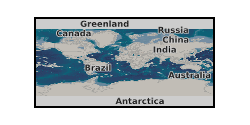
The mechanical data (confining and injection pressures) recorded during Vickers indentation experiments on samples of shale materials. These experiments were conducted on the I12 beamline, Diamond Light Source, Harwell as part of beamtime EE17606-1 between 31/01/18 and 05/02/18.
-
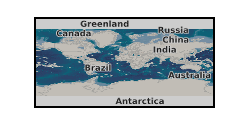
This dataset contains results from nanoindentation testing of five shale samples from the Horn River Basin (core from wells A100B/94 and D94A/94). The samples are from the following formations: A3 Fort Simpson, A6 Fort Simpson, D1 Muskwa, A16 Otter Park, and A20 Evie. The data is in two sets. Set 1 includes nanoindentation data from all samples, with grids conducted both parallel and perpendicular to the bedding plane. In Set 2, additional chemical analysis of select grids (on samples A3, A6 and A20) was undertaken using SEM/EDS. Both sets include the following tab-separated .txt files: grid_para.txt [Load-displacement-time data for each indent (parallel indentation)]; grid_para_summary.txt [Reduced elastic modulus, hardness and creep modulus for each indent (parallel indentation)]; grid_perp.txt [Load-displacement-time data for each indent (perpendicular indentation)]; grid_perp_summary.txt [Reduced elastic modulus, hardness and creep modulus data for each indent (parallel indentation)]. Set 2 also includes .tif files containing SEM images and EDS chemical analysis of the grids. The data has been filtered to remove indents which show 'pop-in' behaviour or time-displacement curves that do not conform to a logarithmic fit. ACKNOWLEDGMENT - The authors wish to thank the Natural Environment Research Council (NERC) for funding this research through the SHAPE-UK project (grant numbers NE/R018057/1, NE/R017840/1, and NE/R017565/1), which forms Challenge 3 of the UKUH (Unconventional Hydrocarbons in the UK Energy System) programme.
-

These data accompany a manuscript, titled: Stream and Slope Weathering Effects on Organic-rich Mudstone Geochemistry and Implications for Hydrocarbon Source Rock Assessment: A Bowland Shale Case Study All files with prefix 'Man_1' relate to this submission. The manuscript was submitted to the journal Chemical Geology in December 2016. Data include: 1) A range of photographs from the outcrop, drill cores, sub-samples, 'weathering grades' and thin section microphotographs from the Bowland Shale; 2) The results of mineralogical (whole rock powder x-ray diffraction; XRD) analyses for 18 subsamples; 3) The results of inorganic geochemical analyses (LECO elemental C and S, x-ray fluorescence major and trace elements) for 18 subsamples; 4) The results of organic geochemical analyses (Rock-Eval pyrolysis, d13Corg) for 20 subsamples; 5) RStudio scripts used to conduct statistical analyses (e.g., Principal Components Analysis) and generation of figures.
-

These data comprise geochemical results from upper Ediacaran organic-rich shales / mudstones from the Yangtze Craton (South China) from the Doushantuo Formation (member IV) and overlying lower Dengying Formation (= Miaohe Member). Ages range from about 570 to 550 Ma. The data consist of iron partitioning (Fe-speciation), phosphorus partitioning (P-speciation), bulk rock metal concentrations, total organic content and pyrite sulfur isotopes. Major and trace element concentrations of all samples were measured by inductively coupled plasma optical emission spectrometry and mass spectrometry, respectively, after quantitative HNO3-HFHClO4 digestion. Fe speciation was performed after the established methodology of Poulton and Canfield to extract operationally defined Fe phases, including Fe associated with carbonates (Fecarb), ferric oxides (Feox), magnetite (Femag), and pyrite (Fepy). The sum of these Fe pools constitutes the proportion of Fe that is considered highly reactive (FeHR) toward dissolved sulfide. Ratios of FeHR/FeT > 0.38 support FeHR enrichment and deposition under anoxic bottom water conditions, whereas values of <0.22 indicate deposition from oxic bottom waters. The intermediate range of 0.22 to 0.38 is regarded as equivocal because of the possibility for rapid sediment deposition or early diagenetic transformation of unsulfidized FeHR to poorly reactive sheet silicate minerals. For anoxic samples (FeHR/FeT > 0.38), the degree of sulfidation of the FeHR pool can be used to distinguish ferruginous (Fepy/FeHR <0.7) from euxinic (Fepy/FeHR > 0.8) conditions, with an intermediate zone ascribed to “possible euxinia”. Recent analyses of Holocene sapropels and the euxinic Lake Cadagno indicate that Fepy/FeHR > 0.6 may be a more suitable threshold for distinguishing ferruginous from possible euxinic conditions. Selected shale samples were analyzed for pyrite sulfur isotopes (δ34Spy), TOC, organic carbon isotopes (δ13Corg), and P phase associations. The P measurements use a sequential extraction method to distinguish the proportion of total P (PTot) associated with detrital apatite (Pdet) relative to potentially bioavailable and reactive (Preac) minerals, including Fe (oxyhydr)oxides (PFe),organic matter (Porg), and authigenic carbonate fluorapatite, biogenic apatite, and CaCO3-bound P (Pauth). For methods, see: S. W. Poulton, D. E. Canfield, Development of a sequential extraction procedure for iron: Implications for iron partitioning in continentally derived particulates. Chem. Geol. 214, 209–221 (2005). Fred T. Bowyer, Alexander J. Krause, Yafang Song, Kang-Jun Huang, Yong Fu, Bing Shen, Jin Li, Xiang-Kun Zhu, Michael A. Kipp, Lennart M. van Maldegem, Jochen J. Brocks, Graham A. Shields, Guillaume Le Hir, Benjamin J. W. Mills, and Simon W. Poulton Biological diversification linked to environmental stabilization following the Sturtian Snowball glaciation. Sci. Adv. 9 (34), eadf9999. DOI: 10.1126/sciadv.adf9999 (2023)
-
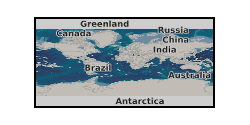
This data set contains seismic source parameters (magnitudes, corner frequencies, stress drops and their associated uncertainty) for 94 microseismic events linked to fault reactivation during hydro-fracturing operations in the Horn River Basin (British Columbia). The data presented here were derived from proprietary third party seismic data recorded on 2 arrays of 35 - 15 Hz GEO-OMNI-2400 borehole geophones each. These data were first reported in Adam G Klinger, Maximilian J Werner, Stress drops of hydraulic fracturing induced microseismicity in the Horn River basin: challenges at high frequencies recorded by borehole geophones, Geophysical Journal International, Volume 228, Issue 3, March 2022, Pages 2018–2037, https://doi.org/10.1093/gji/ggab458
-
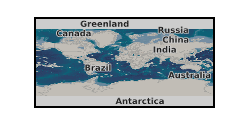
The dataset describes the results of high pressure experimental measurements of three contrasting 'tight' rocks; a Bowland Shale, a Haynesville shale and Pennant sandstone. The results are tabulated as a csv file, listing experimental parameters, confining pressure, argon gas pore pressure and permeability. complementary measurements of key petrophysical data are provided - bulk modulus of compressibility, porosity TOC and density.
-
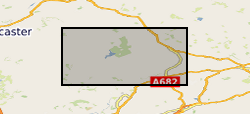
The data were produced by Joe Emmings, NERC-funded PhD student at the University of Leicester and British Geological Survey, between 2014 and 2017. Authors of these data: Joe Emmings a, b; Sarah Davies a; Christopher Vane b; Melanie Leng b, c; Vicky Moss-Hayes b; Michael Stephenson b a School of Geography, Geology and the Environment, University of Leicester, University Road, Leicester, LE1 7RH, UK. b British Geological Survey, Keyworth, Nottingham, NG12 5GG, UK. c School of Biosciences, Centre for Environmental Geochemistry, University of Nottingham, Sutton Bonington Campus, Leicestershire LE12 5RD, UK. Data include: 1) A range of photographs from the outcrop Hind Clough and boreholes MHD4 and Cominco S9, sample photographs, thin section scans, microphotographs (transmitted light and scanning electron microscopy) and hand specimen descriptions; 2) The results of 100 analyses from the outcrop Hind Clough and boreholes MHD4 and Cominco S9; x-ray fluorescence major and trace element concentrations, RockEval pyrolysis measurements, x-ray diffraction traces and LECO elemental C and S data. These data were interpreted together with 20 drill-core samples previously acquired from Hind Clough ('HC01' prefix). See http://dx.doi.org/10.5285/c39a32b2-1a30-4426-8389-2fae21ec60ad for further information regarding this drill-core dataset. Acknowledgements: This study was funded by NERC grant NE/L002493/1, a part of the Central England Training Alliance (CENTA). This study also received CASE funding from the BGS. Nick Riley (Carboniferous Ltd) is thanked for sharing his expertise, particularly regarding the field identification of marine faunas. Charlotte Watts is thanked for providing field assistance. Nick Marsh, Tom Knott and Cheryl Haidon are thanked for providing expertise and assistance during inorganic geochemical and mineralogical analyses.
-
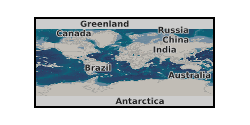
Porosity of core samples SSK111464 (sandstone) and SSK111465 (shale) calculated using backscatter electron SEM images of carbon coated thin sections processed in ImageJ Fiji software. 85 images of SSK111464 (sandstone) used and 74 images of SSK111465 (shale) at various magnifications. Core samples from UKGEOS Glasgow Observatory, borehole GGC01. Samples and data are derived from the UK Geoenergy Observatories Programme funded by the UKRI Natural Environment Research Council and delivered by the British Geological Survey.
-
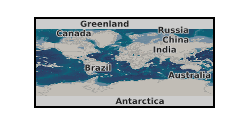
A number of processes, both natural and anthropogenic, involve the fracture of rocks subjected to tensile stress, including vein growth and mineralization, and the extraction of hydrocarbons through hydraulic fracturing. In each case, the fundamental material property of mode-I fracture toughness must be overcome in order for a tensile fracture to nucleate and propagate. Whilst measuring this parameter is straightforward at ambient pressure, estimating the fracture toughness of rocks at depth, where they experience a confining pressure, is technically challenging. Here, we report a new analysis combining results from standard thick-walled cylinder burst tests with quantitative acoustic emission to estimate the mode-I fracture toughness (KIc) of Nash Point Shale at elevated confining pressure, simulating in-situ conditions to approximately 1km. In the most favorable orientation, the pressure required to fracture the rock shell (injection pressure, Pinj) increases from 6.1 MPa at 2.2 MPa confining pressure (PC), to 34 MPa at 20 MPa confining pressure. When fractures cross the shale bedding, the required injection pressures are 30.3 MPa (at Pc = 4.5 MPa) and 58 MPa (at Pc = 20 MPa), respectively. Applying the model of Abou-Sayed (1978) to estimate initial flaw size, we calculate that this pressure increase equates to an increase in KIc from 0.6 MPa.m1/2 at 3.2 MPa differential pressure (Pinj - PC) to 4.1 MPa.m1/2 at 22 MPa differential pressure. We conclude that the increasing pressure due to depth in the Earth will have a significant influence on fracture toughness, which is also a function of the inherent anisotropy.
 NERC Data Catalogue Service
NERC Data Catalogue Service